|
In 1946 the Women's League of the Hollis Presbyterian Church in Hollis, NY published this community cookbook, Hollis Pantry Secrets. Hollis is a neighborhood in Queens County, NY and in the 1940s was a relatively new development of single-family homes that had only been part of New York City since 1898, when it was developed from rural farmland. I was in the process of digitizing the cookbook when I ran across a somewhat familiar name. "Elizabeth Trump Walter." Could it be? Was she related to President Donald Trump? I started digging, but sadly, there wasn't much to find. Elizabeth was born in 1904 to Elizabeth Christ and Frederick Trump (Sr.), German emigrants to the United States. Frederick (sometimes spelled Friedrich) had made his fortune during the Gold Rush with a hotel specializing in alcohol and suites for prostitutes. He returned to Germany in sometime before 1902, only to run into trouble with the authorities, who deemed his emigration illegal because he had not completed his military service. He met and married Elizabeth Christ in 1902 and they moved to New York City. In 1904, homesick Elizabeth convinced him to return to Germany, but due to Frederick's trouble with the authorities over his lack of military service, they could not stay, and returned to New York City in 1905. It is unclear if Elizabeth the younger was born in Germany or not. Her younger brother Frederick Jr. was born in 1905 and John in 1907. Frederick Trump Sr. died of Spanish Influenza in 1918, and the family was soon in trouble financially. Elizabeth Christ Trump decided to continue her husband's work in real estate development, and that her children would be her primary employees. Elizabeth the younger was also the eldest child - she left high school to attend secretarial school so that she could be the accountant for the newly formed E. Trump and Son company. Her youngest brother John was to be the company architect. Fred Jr. the builder. John left the company early on and Fred Jr., with his mother, built E. Trump and Son into a real estate empire. Derailed by the stock market crash of 1929, when E. Trump and Son officially went out of business, by 1934 Fred Jr. managed to finagle his way into a mortgage-servicing contract, and the Trumps were back in the real estate business. The rest is fairly well-known history, including Trump's housing discrimination. But what about Elizabeth? Her history is almost non-existent. She has no Wikipedia page. She isn't even mentioned on her mother's Wikipedia page, despite the fact that Fred Jr. is noted as the "second child" and John the "third." She is mentioned on the Trump family page. We know she married William Walter, who was training to work in a bank, in June of 1929. According to William's 1959 obituary, he was a veteran of World War I who had worked in banks starting as a page boy in 1910. The year he and Elizabeth were married, he was made assistant secretary of the newly formed Manufacturer's Trust. Elizabeth apparently continued in her accounting role after marrying William, but it is unclear whether she left in late 1929 when E. Trump and Son went under, and whether she continued to work under Fred Jr. Elizabeth and William Walter had two children - William Trump Walter, born in 1931, and John Whitney Walter, born in 1934. Both Elizabeth and William Sr. were highly involved in the Hollis Presbyterian Church. He was an elder, she, a member of the Women's League. So it makes sense that Elizabeth would submit recipes for the 1946 cookbook. Here are her recipes: The "Party Suggestions" that start on page 125 is a small section that only contains recipes from Elizabeth Trump Walter! All variations on starter salads (with one exception), probably for ladies' luncheons, but possibly also for themed dinner parties, or even children's parties. South Sea Island Place slice of pineapple in center of a bed of shredded lettuce. Fill hole with cream cheese and put a spring of parsley in cheese to represent palm tree. Cut banana in half lengthwise and then in half crosswise – straight bananas are best – and place these on lettuce sea around pineapple island, cut side up. Cut saltines diagonally in half. Each half makes a sail. Insert tooth pick in corner and stick in banan boat. Cut strips of wax paper about ¾ inch by 1 ½ inches. Fringe and tie around chocolate candy dolls for grass skirt and place under palm tree. Mexican Hayride Force a Ritz cracker on either side of a toothpick for wheels and axle. Make two sets for each service. Fill lettuce cups with crab meat salad and place on top of two sets of wheels and axles. Force animal crackers on either side of a toothpick. This kames a pair of horses. As many pairs of horses as desired may be used. Place thin strips of green pepper from lettuce cups to team of horses for reins. Snow Man Ice cream cone Whipped cream Scoop of vanilla ice cream 3 inch round of sponge cake Cover sponge cake with whipped cream. – Place scoop of ice cream in center of sponge round. Invert cone on ice cream. Make eyes of melted chocolate and use slice of cherry for mouth. Force whipping cream through tube to make ruffling for collar around face. Sail Boats Peel cucumber and cut in half, lengthwise. Scoop out center and mix with salmon salad. Fill mixture in cucumber boat – Place on bed of shredded lettuce for waves. To make sail, cut drinking straw in half. Cut rectangle from stiff white paper and attach to half of straw with scotch tape. Place sail in center of boat. Easter Eggs in Nests Place slice of pineapple on small bed of shredded lettuce. Divide cream cheese into five parts. Color each part a different pastel shade, leaving one white. Form cream cheese into small eggs, the size of a robins egg and place in center of pineapple slice. Circus Salad Cut a five inch circle from a piece of stiff paper with pinking shears. Cut a slit to center from one side and then put together to form a dome shaped piece for top of tent. Place tuna fish salad in center of plate. Around salad sprinkle Cornflakes or Rice Krispies to represent sawdust. Insert five pretzel sticks around salad and place tent on top of these sticks. Her six party suggestions make up the entire "Party Suggestions" chapter. I, personally, would have a hard time cutting saltines in half or forcing toothpicks into crackers, so clearly this sort of thing took a great deal of finesse. Elizabeth Trump Walter died on December 4, 1961, at the age of 57, "after a long illness," just two years after her husband William. Her obituary is on page 37 of that day's New York Times, towards the bottom. She pre-deceased her mother Elizabeth Christ Trump by five years. Ironically, Elizabeth Christ Trump does not have an obituary in the New York Times, she is only listed among the deaths recorded on June 9, 1966 - her notice submitted by the Federation of Jewish Philanthropics. According to Elizabeth's son John Walter's 2018 obituary, the Walters moved to Manhasset, NY toward the end of their lives. They lived in a retirement home built by the Walters and likely Fred Trump, Jr., but died just a few years later. John begun attending the Congregational Church of Manhasset at his mother's behest. Elizabeth Trump Walter was memorialized with a restored organ at the Congregational Church of Manhassett, NY sometime in recent years. Elizabeth Trump Walter rarely shows up in Trump family histories, probably because of her early death compared with the Trump family fortunes. But it was a fascinating project to track down what I could about her. The Hollis Pantry Cook Book has more secrets and famous recipe authors to share, so stay tuned for future blog posts. Have you ever found a famous person's name in a community cookbook? Tell us in the comments! The Food Historian blog is supported by patrons on Patreon! Join us for awesome members-only content like free digitized cookbooks from my personal collection, e-newsletter, and even snail mail from time to time!
2 Comments
This article contains Amazon.com and Bookshop.org affiliate links. If you purchase anything from these links, The Food Historian will receive a small commission. All Stirred Up: Suffrage Cookbooks, Food, and the Battle for Women’s Right to Vote, Laura Kumin. New York: Pegasus Books, 2020. 357 pp., $28.95, hardcover, ISBN 978-1-64313-452-9. ,I first learned about cookbooks associated with women’s suffrage thanks to this Atlas Obscura article and I was instantly fascinated. Feminism in the 20th century was often more interested in throwing off the chains of household drudgery than with enticing converts through snacks. But that is precisely the premise of All Stirred Up: Suffrage Cookbooks, Food, and the Battle for Women's Right to Vote, which is why I was so excited that I put it on my Christmas wish list. I was expecting a thorough examination of the suffrage cookbooks, the women who created them, and their place in the movement. Sadly, as a book, All Stirred Up is like an underdone cake – it looks perfect on the outside, but the inside is doughy and disappointing and could have used another 30 minutes in the oven. Laura Kumin is a former lawyer turned cooking educator and food writer. She does not have a historical background, and, as is the case with many non-historians who write food history, it shows. All Stirred Up begins, even before the introduction, with a lengthy timeline. While I find timelines to be incredibly useful, especially when dealing with complex chronology, starting the book with one was not a choice I would have made. It is confusing to the reader, who is presented lengthy and disparate facts without context or introduction. A lack of context is a theme for the book. Kumin’s introduction is part explanation of her interest in suffrage cookbooks and part layout of her main argument. She makes a compelling case that modern takes on suffrage history have largely ignored the role of cookbooks in converting skeptics to the cause. Unfortunately, this argument is not often revisited in the subsequent chapters. Most of the chapters are quite brief, some as few as eight pages, and while historical overviews abound, actual analysis is lacking. Taking up the most space are the recipe sections that follow each chapter, organized by type. Although these recipes are directly taken from the suffrage cookbooks, with modern adaptations designed by Kumin, there is no context for any of the recipes and no dates listed. Most recipe sections draw from multiple suffrage cookbooks without differentiating between them, beyond noting where the originals came from. We do not know why Kumin chose these particular recipes, how they reflected the cookbooks and times from whence they came, or even what, if any, relevance they had to the suffrage movement. For many chapters, the number of pages devoted to recipes outweigh the pages devoted to history. As for the history itself, most of it is shallow summaries meant to orient the reader to the basics of suffrage history, home economics and food science, and basic culture of the period. While this context is useful for non-historians, it seems to come at the expense of historical analysis. In addition, the chronology of the book is all over the place. The book begins in 1848, with an exercise in “time travel” in which Kumin writes in the present tense. Then zooms ahead to the Progressive Era and back again several times. At the end of Chapter 3, we’re already at the 19th Amendment in 1920, an achievement which is not really revisited for the rest of the book. Throughout the book, the suffrage movement in one decade is conflated with the same movement decades later. Little attention is paid to the context of national culture on the way in which the women's suffrage movement was operated, despite the fact that it was under operation, in one way or another, for over 70 years. Missed opportunities to make connections to other major movements, including abolitionism, Temperance (which is dismissed as detrimental to the cause, p. 78-79), Progressive reform, government regulation, etc., abound. Chapters 3, 4, and 6 are the strongest, content- and argument-wise. In Chapter 3, “From Seneca Falls to the Ballot Box,” Kumin examines the suffragists themselves and the post-Civil War resurgence of the movement. To her credit, she makes a point of mentioning African American suffragists and their shameful treatment by mainstream white suffragists, as well as male allies and the “antis” – anti-suffragists. However, points that needed more analysis were often presented as literal sidebars in the text. For instance, noted suffrage ally Frederick Douglass, instead of being included in the main text, receives a short summary in a gray box. The Beecher family get similar treatment in a sidebar about how the movement split families. Catharine Beecher, a fervent anti-suffragist, was a cookbook author and young women’s educator of some renown and who, despite conflicting ideas about suffrage, nonetheless co-wrote The American Woman’s Home with her suffragist sister. Cookbook author, fervent abolitionist, and Native American rights activist Lydia Maria Child is mentioned in a quotation, but otherwise ignored. These are just a few of many missed opportunities to engage with the subject matter more deeply – discussing how both suffragists and “antis” used women’s work and the home in their arguments for and against suffrage. Chapter 4, “We Can Peel Potatoes and Fight for the Vote, Too! Suffrage Strategies and Battle Tactics” is the strongest chapter in the book, and one of the few that cites primary sources in the endnotes. Discussing the divergent tactics between “mainstream” and “militant” suffragists, Kumin compares the mainstream work of the cookbooks, cafeterias, the “doughnut campaign,” a “Pure Food” storefront, and cooperating with agricultural extension, to the militant tactics of parades, protests, arrests, and hunger strikes. Unfortunately, she does not define who exactly is “mainstream” and who is “militant,” except to note differing tactics. Kumin argues that the more mainstream feminists were more successful in changing hearts and minds, but presents little evidence to back up this claim. In addition, despite covering the bulk of the Progressive Era, the chapter mentions, but gives little context to agricultural extension, the Temperance movement, home economics, World War I, and women’s clubs. An overview of home economics and food science comes in the following chapter, “Revolution in the Kitchen.” Chapter 6 finally addresses the cookbooks themselves, with an overview of how they were financed, celebrity contributors, and how the recipes included were reflective of the periods in which they were published. The cookbooks are still dealt with in generalizations, however, and their individuality is lost in the mix. The section on celebrities, although interesting contains another missed opportunity, as Kumin mentions one recipe contribution from noted feminist Charlotte Perkins Gilman, but not her dislike of cooking. In the section on funding, Kumin clearly notes that the cookbooks were usually designed as fundraisers for the organizations, a fact that belies her argument that cookbooks were meant to convert, though she does note they were sometimes also used as enticing premiums for subscriptions. Chapter 7 is a brief discussion of how suffragists used dinners and entertaining to support the cause. All Stirred Up ends without a clear conclusion, instead relying on Chapter 8, “What Suffrage Means for Us,” an eight-page summary of women in American politics since 1920. This final chapter makes no clear reference to the influence of the cookbooks that purportedly drove the suffrage movement and does not sum up the arguments outlined in the introduction. It is followed by 28 pages of dessert recipes. There is no explanatory postscript, only Kumin’s acknowledgements. In all, All Stirred Up does make a good point about the role of suffrage cookbooks in the movement, but it fails to back up its few arguments convincingly, particularly in light of the use of community cookbooks as fundraising tools, rather than modes of conversion to the cause. Instead of concentrating the bulk of her argument into Chapter 4, Kumin would have had a much more compelling book had she spread that argument throughout all the chapters, addressing the role of domesticity from the perspectives of both the suffragists and the antis. More primary source analysis would have enriched the narrative. Looking at the writing of major suffrage leaders to determine their personal opinions on cooking and domesticity would have added depth to her arguments. Examining the cookbooks themselves, their recipes, and the organizations and women that produced them as a chronological accounting of the movement, would have added greatly to the coherence and context of the book. Had the recipe sections been introduced by era, with headnotes and historical context for each recipe, their inclusion would have made the book both stronger and appealing to the general public. Ultimately, the book feels as though it was rushed to print, possibly to coincide with the centennial anniversary of the 19th Amendment in 2020. If you are unfamiliar with basic suffrage and food history, this may provide some good historical summaries and Kumin’s research on the 1909 Washington Women’s Cook Book is particularly strong. But, if you were hoping for a well-written, well-organized examination of the role of food in the suffrage movement and the influence of suffrage cookbooks, as I was, you’ll be sorely disappointed. I can only hope that future historians can expand on Kumin’s work. If you'd like more food history book reviews, check out the Book Review category of this blog. The Food Historian blog is supported by patrons on Patreon! Join us for awesome members-only content like free digitized cookbooks from my personal collection, e-newsletter, and even snail mail from time to time! Today was a chilly VERY blustery day - my styrofoam Halloween headstone actually blew away this morning! Luckily it only blew into the side yard and wasn't too damaged. Long story short, it seemed like the perfect weather for chicken and dumpling soup. Only problem? I'd yet to find a good dumpling recipe. Until I consulted the glorious Ida Bailey Allen and her 1942 Money-Saving Cook Book. Ida Bailey Allen is one of my favorite relatively unknown celebrity cookbook authors. She was PROLIFIC and published over 50 cookbooks in her lifetime, from 1917 to the 1973 Best Loved Recipes of the American People, published the same year she died. A food writer, magazine editor, and essentially the founder of homemaker radio (she was the president of the Radio Homemakers Association), she was also the first female food TV host with her show "Mrs. Allen and the Chef" (you can listen to clip here!). One of the only moving images of Mrs. Allen that seems to survive on the internet is this little clip from the 1940s - a retrospective of the 1920s. Candy in tea! Who knew? Her Money-Saving Cook Book, first published in 1940 was republished in 1942 as a Victory edition, which is the version I have. It's just a delightful cookbook - chock full of basic, easy, and inexpensive recipes, as well as a bunch of 1940s-style vegetable recipes that I can't wait to try out. So when I was on the hunt for a dumpling recipe to go with my chicken soup, this one of the first cookbooks I consulted, and it did not disappoint. First, let's start with the chicken soup. Scratch Chicken Soup1 pound chicken 5 quarts water (or 4 quarts water and 1 quart chicken stock) 1 onion 2-3 ribs celery 1 cup diced carrots 1 cup frozen peas 1 cup frozen corn (or 1 bag mixed frozen corn, peas, and carrots) salt & pepper to taste Soup is always way easier than people think. It's just a matter of adding ingredients at the right time depending on how long they have to cook. Start with the chicken. You can use boneless or bone-in, skin-on. If using boneless, substitute 1 quart of water with chicken stock for extra flavor. In a large stock pot (I used my favorite cast iron dutch oven), add the chicken, water (and/or stock), onion, celery, and carrots (if using fresh). If not using chicken broth (which is salted), add a teaspoon of salt. Bring to a boil and reduce heat to a simmer, cooking until the chicken is cooked-through and the carrots are tender. About 20 minutes. Remove the chicken from the broth, dice, and return to the pot. Add the frozen vegetables and return to a simmer. Once the vegetables are tender, voila - chicken soup. You can now proceed to the dumpling recipe. Ida Bailey Allen's Puffy Drop DumplingsI didn't want to roll out the dumplings, so I used the Drop Dumpling version of the recipe. Here's the original, which turned out pretty well! I did substitute butter for the shortening. If you use salted butter, reduce the salt in the recipe to 1/2 or 3/4 teaspoon. 2 cups all-purpose flour 1 teaspoon salt 1 teaspoons baking powder 1 tablespoon unsalted butter 1 cup whole milk Use a balloon whisk to blend the flour, salt, and baking powder together. Cut the butter into small pieces and squish in the flour with your fingers (or cut in with a pastry blender) - there should be small chunks or streaks of butter left in the floury mixture. Then add 1 cup milk. Mrs. Allen called for a scant cup, but that wasn't quite enough - my mix was dry instead of being soft. Using a regular table or soup spoon, drop bits of dough about the size of a walnut (or a little larger) into the simmering soup. There will be a lot - submerge any exposed parts under the broth to make sure they steam properly. They'll start puffing up/breaking up almost immediately. Cover the pot and simmer for about 5 minutes. The flour from the dumplings will thicken the broth nicely. The dumplings exceeded my expectations - being a cross between that doughy chew you expect from a nice soup dumpling and light and spongy on the inside of the larger ones. All in all - a perfect one pot supper on a blustery, chilly day. The Food Historian blog is supported by patrons on Patreon! Join us for awesome members-only content like free digitized cookbooks from my personal collection, e-newsletter, and even snail mail from time to time!
Longtime followers of this blog may have noticed that I keep moving the goalposts on book publication. That's because life, as it often does, has intervened in the past few years. So poor "Preserve or Perish" gets neglected, and I feel guilty about it. I'm hoping that 2020 will bring more stability, less stress, and more routine and free time. So of course, the book is at the top of the list! My primary goals for 2020 are thus: Write.My book, "Preserve or Perish," on food in New York State during WWI is nearly complete. Peer reviewers wanted more context, my editor wanted a chapter on propaganda, and I wanted to add recipes and make the academic text a little more approachable to the lay reader. But editing, an essential part of the writing process, is HARD. Especially when adding context means you have to go back and read (and take notes on) and condense and cite even more secondary source books. I am, however, probably most of the way there. I'm not sure what the final book will look like, as this one is ending up longer than expected, but I know that the finished product will be better for the time and attention. Setting a completion deadline for myself also usually works to kick in my "oh no I have a deadline let me work furiously and extremely efficiently to meet it" generally works. So fingers crossed. I also want to post more in this blog. Thank goodness for the scheduling function, so I can sit down and write a few posts at a time. But I also want to branch out in topics. I've loved the World War Wednesday series, but I want more time for historic recipes and cookbooks, too. Teach.I know a LOT about food history. I've been studying it, on a fairly regular basis, for over 15 years. And I want to share what I know, but the traditional college course is not really for me (also, adjuncts are treated terribly in academia). Which is why I'm in the process of developing a couple of online courses. I also want to get back into podcasting and/or make a few YouTube videos. Part of the online course process is creating online videos, so why not make a few shorts to post on YouTube? Organize.In the past few years I've acquired a LOT of vintage cookbooks. I've managed to organize some of them, but I have it on good authority that more are coming in 2020. So, that not only means organizing my library (again), but also cataloging what I have and digitizing a few gems to share. Community.This is a bonus resolution, in part because I think it will be so much fun. We've got a great group over on Facebook and my Patreon patrons delight me in more ways than I can say. But I'd like to develop a place for all us like-minded folks to be able to better communicate and spend time together. SO! To that end, I'd like your feedback! What do you think of these goals? I've made a little survey for you to take (only 4 questions long!) and help shape the future of The Food Historian. How About You?Do you have any 2020 goals related to food, history, or food history? Share in the comments!
The holidays are coming soon, and with it comes house guests! Which means that my office-cum-guest-room needed a serious cleaning and reorganizing. Y'know when you have an unused space in your house? And it just collects STUFF? That was our guest room. It's still not at 100%, but we're at like, 95%, which is good. A few more trips to the thrift store and we'll be back in business. As part of this cleanup, I installed a new bookshelf (that I got... a year ago... for my birthday, lol.), pulled ALL of my books out of ALL of their hiding places, dusted down all the surfaces, and reinstalled them. Which means I put hands on every book on food, cooking, and food history I own. And there are a lot of them! A number were gifts that I hadn't even looked at yet. But it was so nice to review everything and not only realize all the treasures I have, but to get excited again for delving into food history of all kinds. I have my books organized a bit differently perhaps than some. All of my "American" cookbooks I have organized largely chronologically. All of my "foreign" cookbooks I have organized by country/region. And then I have all of my more modern books categorized by type of cookbook - baking, dessert, Christmas (!), food preservation, old-fashioned/country, and vegetarian. I haven't counted them all, but I'm already planning to get more matching bookshelves (don't they look so nice?) so I can stop squirreling books away in, say, the drawers of what is supposed to be bedroom furniture. As you can see, I have a bit of a problem, but also a huge opportunity. :D At some point this winter I hope to update the Wassberg Food Library and do some digitizing of some of the cookbooklets in my collection to share with the world, so stay tuned! If you enjoyed this blog post (and you love vintage cookbooks as much as I do), consider becoming a member of The Food Historian! You can join online here, or you can join us on Patreon. Members get access to members-only sections of this website (which will feature some of those digitized cookbooks!), special updates, plus discounts on future events and classes. Plus, you'll help support free content like this for everyone. Join today!
|
AuthorSarah Wassberg Johnson has an MA in Public History from the University at Albany and studies early 20th century food history. Archives
July 2024
Categories
All
|
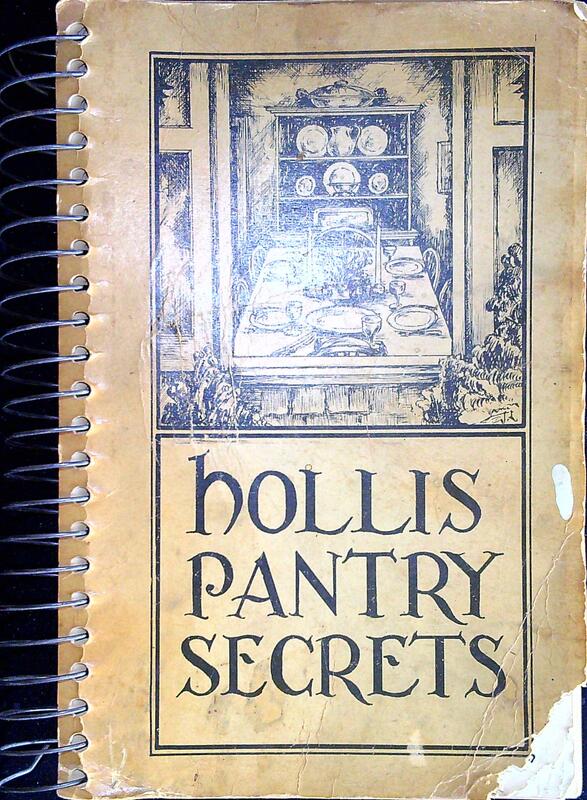




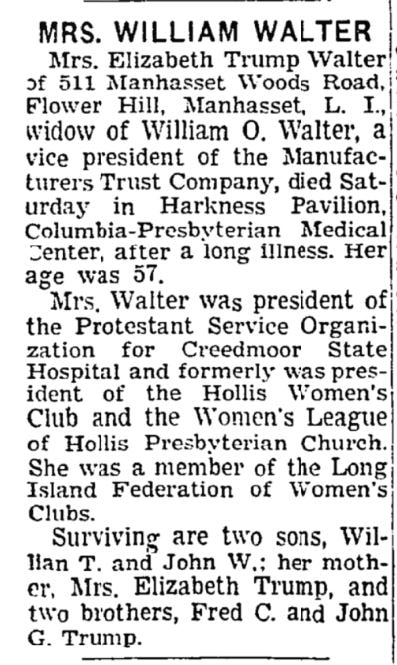
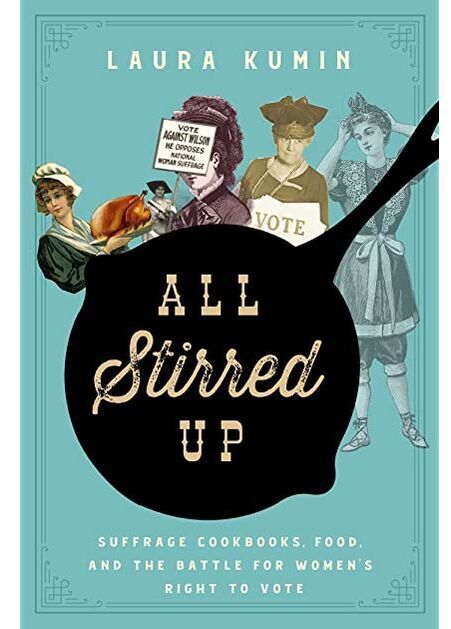

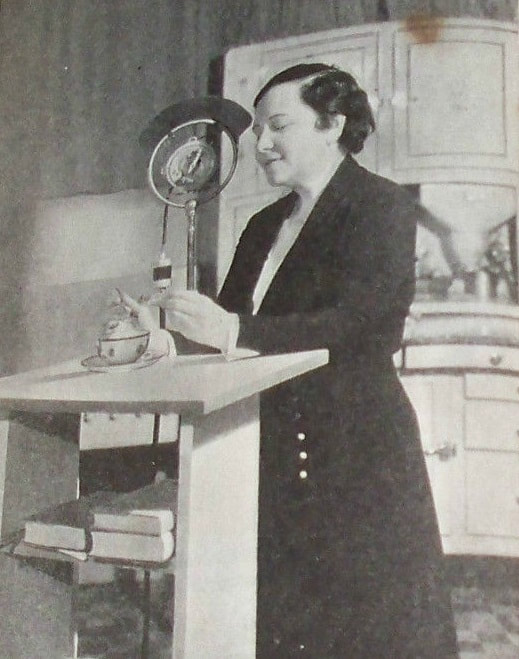
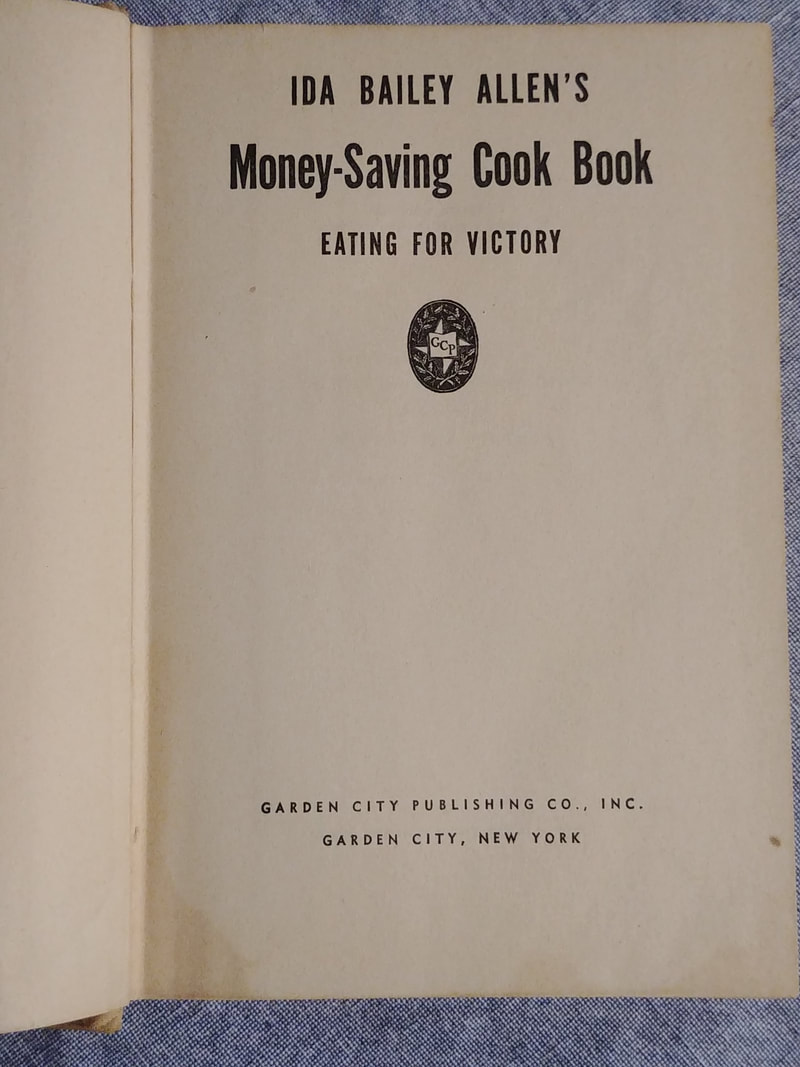




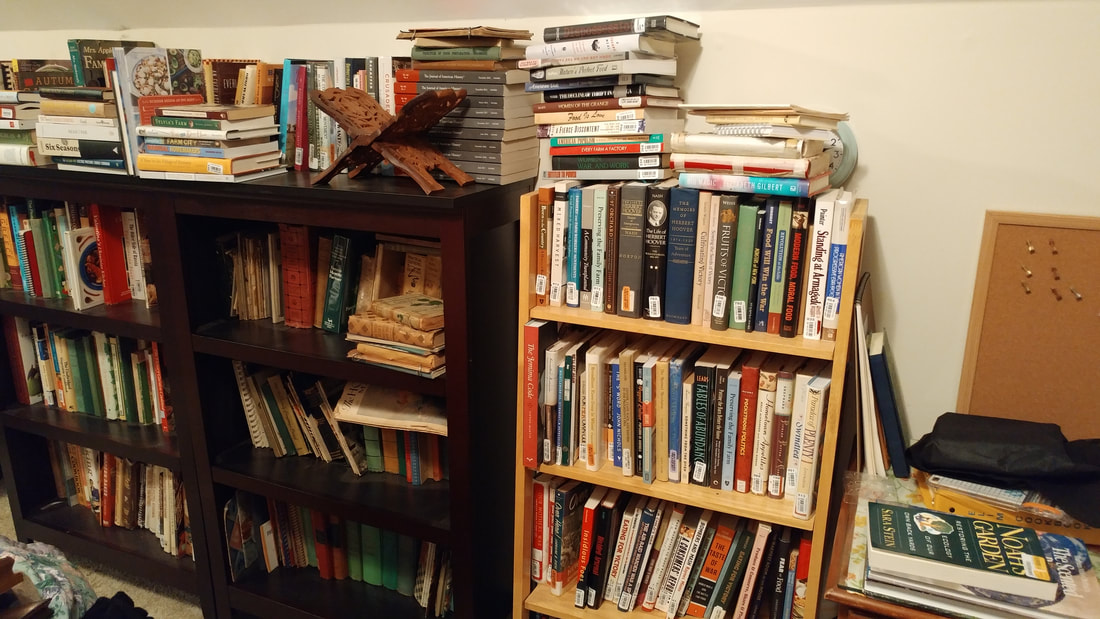


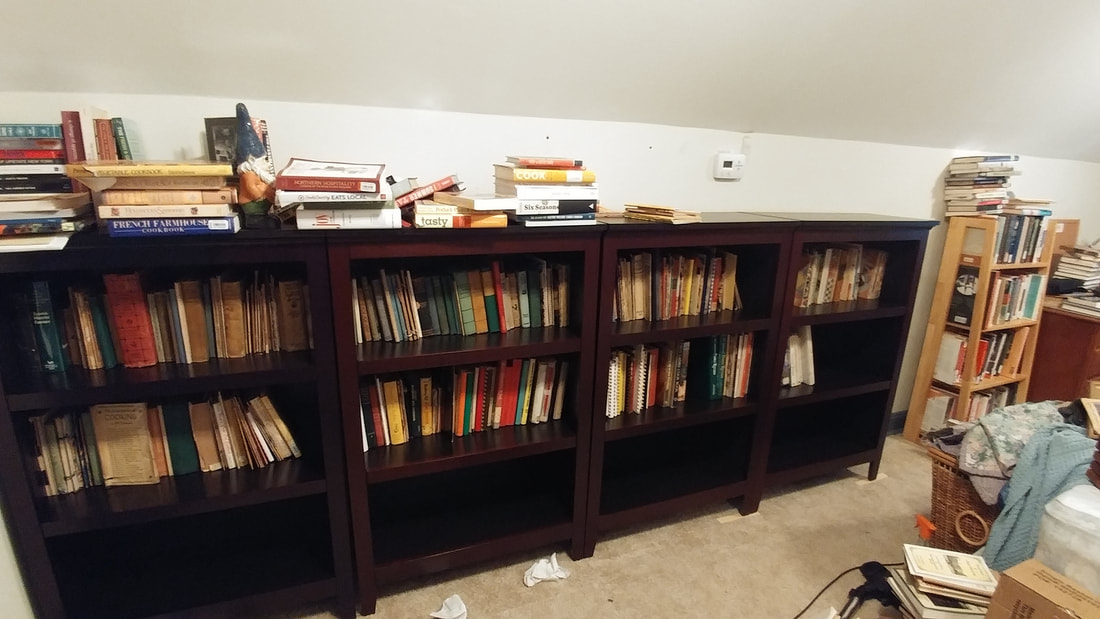




 RSS Feed
RSS Feed